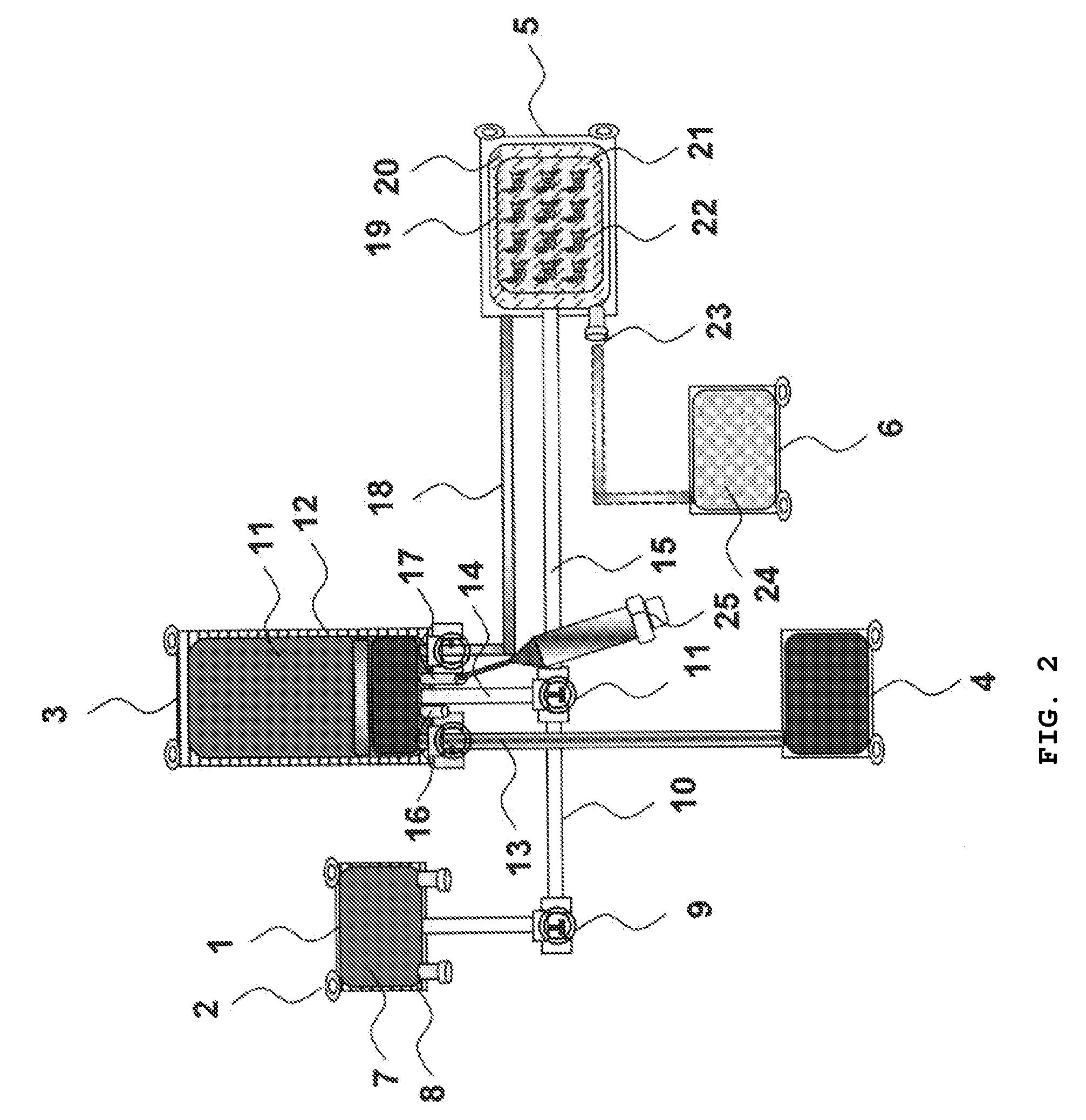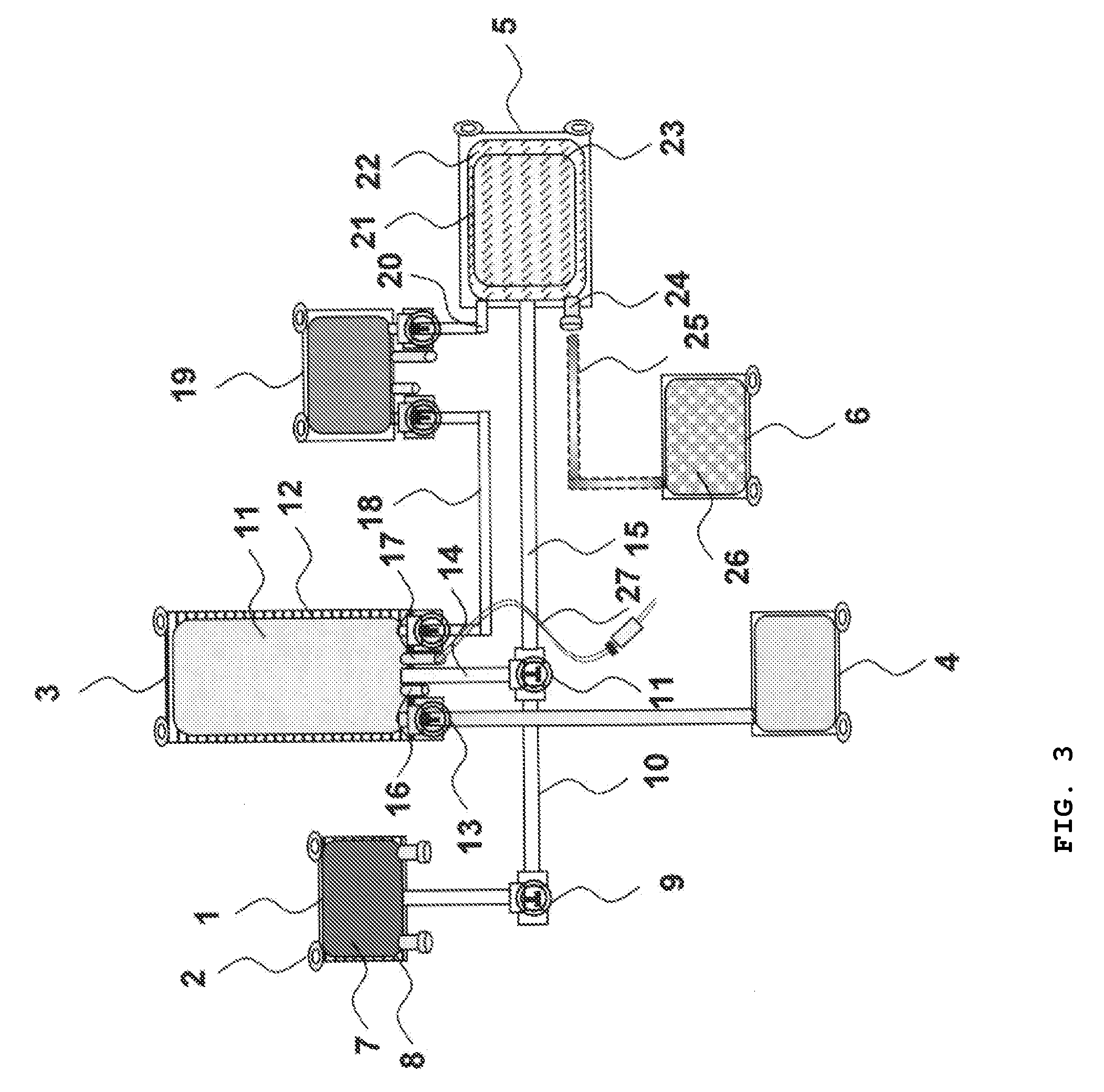Closed system separation of adherent bone marrow stem cells for regenerative medicine applications
a closed system technology, applied in the field of bone marrow stem cell isolation, can solve the problems of difficult identification of stem cell unique molecular markers, difficult stem cell identification, and difficult stem cell identification, and achieve the effect of eliciting neuronal and astrocytic differentiation and minimally invasiv
- Summary
- Abstract
- Description
- Claims
- Application Information
AI Technical Summary
Benefits of technology
Problems solved by technology
Method used
Image
Examples
example
[0099]The present invention is described more fully by way of the following non-limiting example. Modifications of these examples will be apparent to those skilled in the art.
[0100]Human adherent bone marrow cells (ABMC) are isolated using bone marrow aspirates from the iliac crest of spinal cord injury patients. Cells are collected in blood collection bags with interiors coated with poly-L-lysine and containing a standard X-vivo medium and patients own serum or plasma. The cells are incubated for 3 days, and non-adherent cells are removed by replacing the medium with three washing steps. The adherent cells are lifted by incubation with Accutase at 37° C. for 5 min. Prior to transplantation of the isolated ABMC's, the samples are checked for cell phenotype, viability, and sterility. The present inventors surprisingly found that the cells separated from the bags were positive for CD90, CD105, CD166, and CD271, but had no expression of CD34, CD45, and CD14.
[0101]The stem cell-bag will...
PUM
| Property | Measurement | Unit |
|---|---|---|
| concentration | aaaaa | aaaaa |
| adhesive property | aaaaa | aaaaa |
| volume | aaaaa | aaaaa |
Abstract
Description
Claims
Application Information
 Login to View More
Login to View More - R&D
- Intellectual Property
- Life Sciences
- Materials
- Tech Scout
- Unparalleled Data Quality
- Higher Quality Content
- 60% Fewer Hallucinations
Browse by: Latest US Patents, China's latest patents, Technical Efficacy Thesaurus, Application Domain, Technology Topic, Popular Technical Reports.
© 2025 PatSnap. All rights reserved.Legal|Privacy policy|Modern Slavery Act Transparency Statement|Sitemap|About US| Contact US: help@patsnap.com



